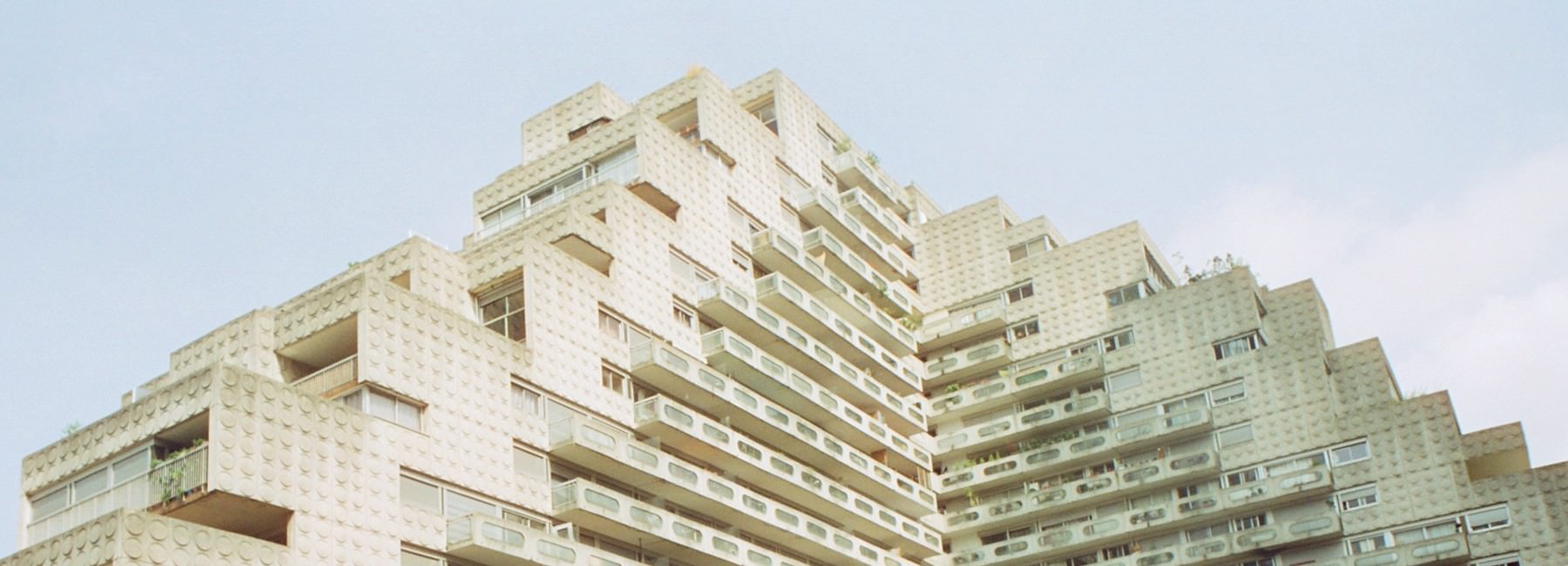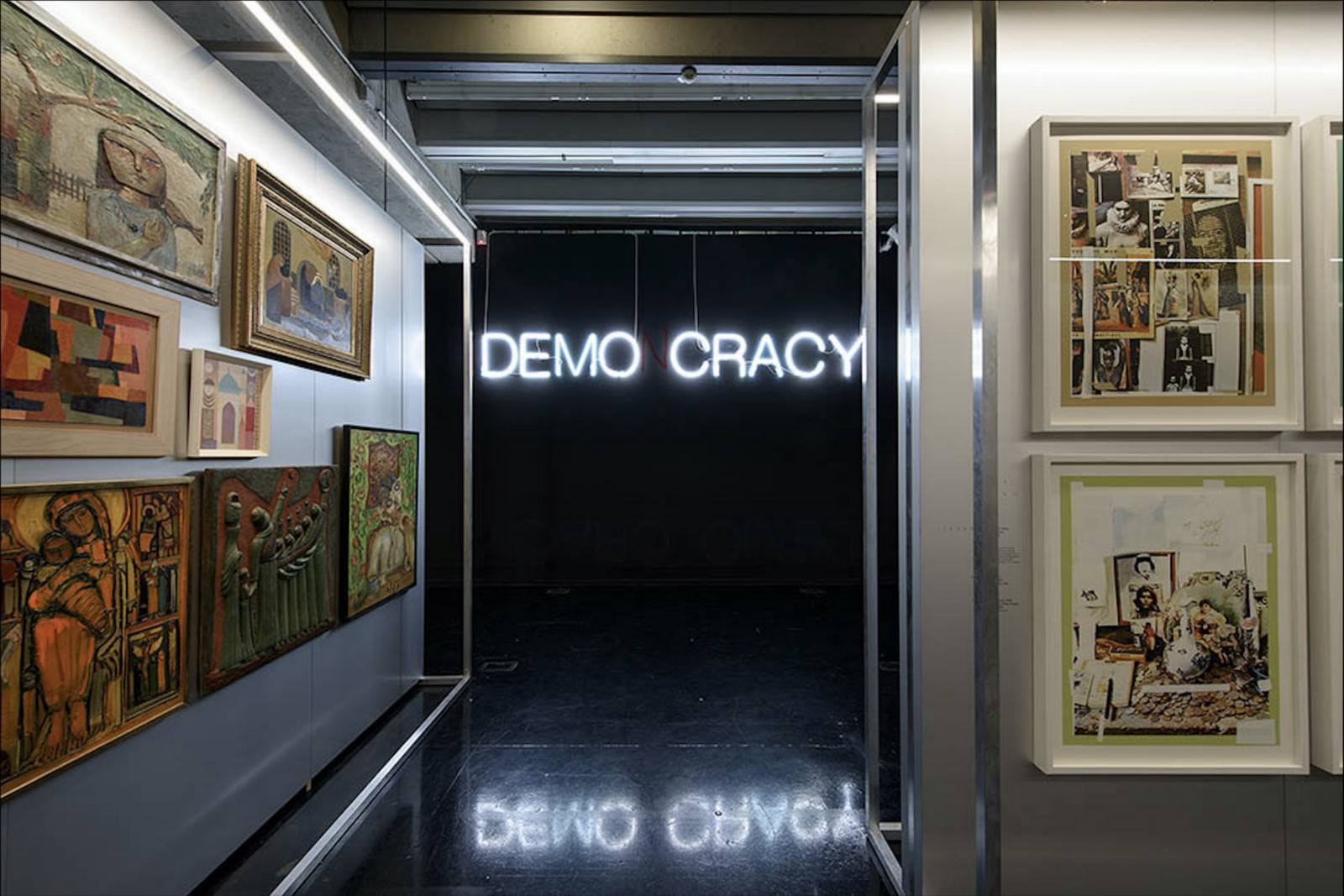
The first time I visited the Institut du Monde Arabe was in 1995 when I was 17 years old during my second year as a student in Paris. Although I was born and brought up in Sharjah, my relationship with the Arab world was at best aloof. I wore Western clothes (mostly blue jeans and a white t-shirt) and read Western books such as Lord of the Flies by William Golding and The Call of the Wild by Jack London. In my last year of high school I met my late friend Thamer Saeed Salman (1977–2013) whose father was the former United Arab Emirates’ ambassador to France and who also served as Minister of Higher Education. Thamer, who had a strong command of the Arabic language, immediately encouraged me to read in Arabic, loaning me books and serving as a translator when I encountered, as I often did, Arabic words I didn’t understand. Following our high school graduation Thamer, along with Fahad Saeed Al Raqbani, who now serves as the UAE’s Ambassador to Canada, and I ended up sharing an apartment in Courbevoie, a commune just outside Paris from 1994 to 1997 when we studied at the American University of Paris before relocating to Paris proper in our final year. It was in Paris that I truly connected to the Arab world. Living with my two flatmates allowed me to experience for the first time an Arabic cultural environment that I had previously shielded myself from. In our cozy apartment Fahad would play songs by Saudi Arabia’s Mohamed Abdu and Thamer would play Egyptian diva Umm Kalthoum. Comedy plays such as the Egyptian classic The Kids Have Grown Up and popular Egyptian movies were also at hand.

My first attempt at reconnecting to the Arab world was a visit I paid in the autumn of 1994 to the Auchan department store in the giant Les Quatre Temps shopping mall of La Défense in the outskirts of Paris. There, at the electronics section, I encountered a young French man named Philippe, perhaps two or three years older than me who spoke good English. I told Philippe I wanted to buy a satellite dish because I want to watch Arabic television. I recall Philippe’s name because I vividly recall his answer. He presented me with a receipt number and said “You must aim the satellite dish at 13 degrees east, that is where the Arabic channels are.” Quite specific instructions for a layman to follow. “But”, I recounted, “how can I measure 13 degrees east?”. He said: “I tell you what, aim the satellite dish at 2pm towards the sun. One more thing, it’s almost November, so you might have to wait a few months for the sun to appear”. He uttered the last line with a cheeky smile on his face.

I loaded the satellite dish along with a receiver and some cables on a trolley and pushed it from Le Quatre Temps to Courbevoie and entered our flat and started to unpack the equipment. Over the next three days the sun would simply not appear at 2pm, it was a cloudy period. So for three days I sat in the balcony of our Damier (checkerboard) complex trying to estimate the approximate location of that almost magical 13 Degrees East that would unlock so much promise and entertainment while Fahad and Thamer looked on attentively and somewhat impatiently. I wasn’t a complete amateur as I had learnt a few tricks from a gentleman who worked at CNN in Atlanta, Georgia and installed a satellite dish at our house in Sharjah back in 1992. On the third day, the sun was clearer and my fidgeting with the satellite dish paid off as we succeeded in getting a signal from the London-based Middle East Broadcasting Channel which was playing some Arabic soap then. It was our eureka moment. We finally had Arabic television, and my two flatmates would be able to watch the UAE football tournament they were agitating for.

A few weeks later my second, and more profound, attempt at reconnecting with the Arab world happened during my visit to the Institut du Monde Arabe. For the first time in my life I saw treasures from the entire region presented in context under one roof in one building. I was familiar then with some of the histories of the Arab world but nothing prepared me in the pre-Internet era days of the mid 1990s for what I was about to encounter. At 17 years old, although I had been to the Pyramids in Egypt, I had never seen treasures from the Maghreb before, or archaeological relics from the Levant or the Arabian Peninsula for that matter. Over the next few years I visited the Institut du Monde Arabe on numerous occasions and always made sure to stop by the Librairie Avicenne, the small Arabic language bookshop nearby. The Institut du Monde Arabe as an idea fascinated me. Was it possible to present all the dichotomies of the Arab world in such a manner? And are there other such examples of this endeavour anywhere else in the world?

I grew to appreciate the Arabic language as I was introduced to the words of Bahraini poet Ebrahim Al-Arrayedh, the music of Abdul Halim Hafez and read about politics in the BBC Arabic publication Al-Mushahid Al-Siyasi (the Political Observer) and Al Majalla magazine. Al Hayat and Al Sharq Al Awsat newspapers became daily reads in our apartment and there was always some Arabic song, sometimes from all three rooms, Fahad’s, Thamer’s and mine, blasting from our stereos. It took Paris for me to appreciate the Arab world.
However, Paris was not just my dream but that of countless Arabs before me. For over a century, the City of Light hosted intellectuals, students, artists, political exiles and economic immigrants from the Arab world. For instance, the first time Alexandria-born George Hanna Sabbagh visited Paris was in 1906 when he was only 19 years old ostensibly to study law. It didn’t take long for him to fall in love with the city’s charm and decide to enroll at the Académie Ranson where Édouard Vuillard taught art. Sabbagh’s relationship to Paris saw him spend considerable time there, taking a French wife, the political activist Agnès Humbert, with whom he had two sons including the acclaimed French journalist, Pierre Sabbagh. Sabbagh became the first Arab artist to exhibit at the prestigious Salon d’Automne in Paris in 1920. In 1918, The “Dean of Arabic Literature,” the blind Egyptian Taha Hussein (1889–1973) graduated from the Sorbonne, writing his PhD in the philosophy of Ibn Khaldoun and marrying the love of his life Suzanne Bresseau whom he nicknamed The Sweet Voice due to her constant reading to him. Syrian Poet Nizar Qabbani fled to Paris following the death of his beloved Bilqis in Beirut while Qabbani’s distant relative Ghada Al Samman has lived in Paris for decades where she continues to write.

However, France’s relationship with the Arab world didn’t start well in the early 20th century. Back then it was firmly in control of half a dozen Arab states, it was an aggressor and an occupier. Decades after liberation, museums and cultural centres can play a vital role in allowing nations to face a dark and difficult past. In the summer of 2012 I visited the musée de l’Armée for an exhibition titled ‘Algeria: 1830–1962’. That exhibition was all that I expected it to be, but it also went beyond that. A number of displays came with a warning, due to graphic content, of the French occupation of that North African country. Visitors had to lift a curtain to see behind the scenes that included gruesome imagery of the occupation.
Twenty years after my stay in Paris my connection to the Arab world is stronger than ever. In 2010 I started the Barjeel Art Foundation to promote Arab art and in 2016 I began filming a television programme, recorded in Arabic, on the Qatari-based online platform AJ+ where we presented a painting by an Arab artist and explained it over two minutes. In November 2016 I presented a 90 minute lecture on the politics of modern Arab art in classical Arabic at the Bibliotheca Alexandrina, something I would have been loathe to do had it not been for my immersion into both the Arabic language and culture during my time in Paris.

The opening of the Jean Nouvel designed Institut du Monde Arabe in Paris in 1987 allowed France to start the process of repositioning its relationship with the Arab world. Those days are now a bygone era that preceded the horrors of Daesh and their crimes against humanity and culture of the Arab world. For many Arabs the images of the extremists breaking into the Mosul Museum in February 2015 and their destruction of ancient artifacts with hammers and power tools will forever be etched in our minds. Sadly this was not an isolated case as cultural destruction in the region has occurred under national governments as in the case of the flooding of Nubian territory in Egypt to construct the Aswan Dam, or foreign intervention such as in the case of the American base that was built over the ruins of the Ziggurat of Ur in Iraq following the occupation of 2003 or simply through sheer negligence or carelessness.
However we have seen in the past few years an attempt at preserving the cultures of the Arab world as with the National Museum of Egyptian Civilization, the Grand Egyptian Museum, Qatar’s Museum of Islamic Art, Egypt’s Coptic Museum, the Louvre Abu Dhabi and the King Abdulaziz Centre for World Culture in Saudi Arabia as well as a plethora of museums in Morocco, Algeria and the Arab Gulf States. These museums not only preserve and promote regional culture but spur new cultural production. However there still remains no equivalent to the Institut du Monde Arabe in terms of mission, scope or size of the collection both of ancient and modern Arab art.

Today Arabs themselves are unable to experience the treasures of their lands. Wars, prohibitive border controls, accessibility to historic sites and financial constraints make it difficult for Arabs let alone outsiders to visit many places. On the modern front, initiatives such as Mathaf: Arab Museum of Modern Art (see my article here) as well as the Barjeel Art Foundation have allowed visitors to experience the wide and diverse range of modern and contemporary Arab art in a comprehensive programme, thereby mirroring one of the tenets of the Institut du Monde Arabe. However no other institution encompasses the scope of the Institut du Monde Arabe in presenting the cultures of the Arab world from ancient civilisations to contemporary practices.
More than thirty years after its opening the Institut du Monde Arabe continues to be a visionary and unique project that is still relevant to France but perhaps even more relevant to the Arab World itself.
This article was originally published in Medium on December 18, 2016. A version of this article was originally published in 2017 for the exhibition catalogue of 100 chefs-d’œuvre de l’art moderne et contemporain arabe: La collection Barjeel, published by Snoeck. A screenshot of this article can be downloaded here.